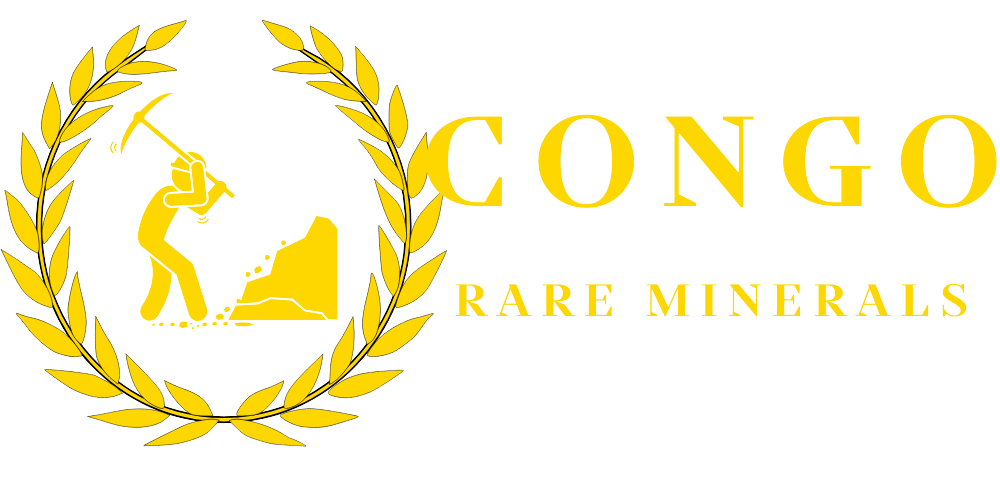The United Arab Emirates (UAE) is rapidly stitching together a commodities corridor that links Gulf capital and world-class logistics with the Democratic Republic of Congo (DRC) home to one of the planet’s largest untapped mineral endowments. For investors in Dubai, Abu Dhabi, Riyadh, Doha, and Manama, this is more than headlines: it’s a practical route to mine-source gold allocations with robust documentation, secure custody in UAE vaults, and scalable supply. Energy Capital Power places the DRC’s mineral endowment at an estimated ~$24 trillion, framing the long runway for deal flow and bullion access. (Energy Capital & Power)
In July 2023, the UAE signed a $1.9 billion partnership with the DRC’s state mining company to develop at least four mines in the country’s east—a clear signal of policy-level commitment to long-term minerals trade between the two markets. That agreement remains a reference point for the corridor’s momentum today. (Al Jazeera)
Why this corridor matters for Gulf investors
1) Tier-one geology meets tier-one trade infrastructure. The DRC brings resource scale; the UAE contributes free-zone efficiency, air cargo capacity, refinery/refining access, and deep bullion liquidity. As capital and compliance frameworks mature, bullion flows from African minehead → Dubai vaults → global settlement become repeatable and scalable. The $24T endowment is the macro backdrop that makes this more than a one-off story. (Energy Capital & Power)
2) Policy validation, not just private interest. The $1.9 billion deal is a government-to-government signal that broadens counterpart depth and reduces single-party risk – key for allocators who prize route durability and documentation quality. (Al Jazeera)
3) Diversification outside Western dealer networks. Routing allocations via the UAE builds redundancy into supply while keeping custody within familiar Dubai and Abu Dhabi infrastructures – useful for family offices and treasuries optimizing for resilience and speed to liquidity.
What “source access” means for gold buyers
Mine-direct logic. Buying closer to origin cuts layers of dealer overhead and inventory risk. In stressed markets, retail spreads widen first; source-linked lanes help preserve pricing discipline and fill certainty.
Documentation as a liquidity tool. Bars that travel with recognized assay certificates (e.g., SGS) and chain-of-custody records clear faster and closer to reference prices with banks and secondary dealers. UAE free-zone intake paired with DRC source documentation gives compliance teams what they need to approve, store, and trade efficiently.
Allocation flexibility. From 100 g bars for portfolio pilots to multi-kilogram blocks and scheduled tranches (monthly/quarterly), source programs let you scale without the SKU limitations common in retail channels.
Where the $1.9 billion deal fits in bullion’s future
While the 2023 agreement focuses on multiple minerals (3T metals and gold), its real significance for bullion allocators is infrastructure and intent: logistics lanes get proven, counterparties multiply, and policy buy-in deepens. Each of these reduces operational friction for gold, making it easier to route documented DRC bars into Dubai vaults at meaningful scale. (Al Jazeera)
Recent UAE activity in African mining—equity stakes, off-take arrangements, and corridor-building adds further evidence that the Gulf is designing long-term mineral access rather than one-off trades. (Industry trackers have chronicled multiple UAE moves across African critical minerals and tin, underscoring the strategic arc.) (Financial Times)
Congo Rare Minerals: your UAE-ready DRC gold lane
Congo Rare Minerals (CRM) sits precisely where source meets systems bridging audited DRC supply to UAE custody:
- Mine-Direct Allocations: Investment bars from 100 g to multi-kg, sourced from partner mines in the DRC and reserved to client specs.
- Assay & Provenance: SGS assay certificates, LBMA-aligned documentation, AML/KYC packs, and end-to-end chain-of-custody.
- Vault-to-Vault Logistics: Insured routing into Dubai free-zone storage or client-designated facilities (and onward to London/Zurich as needed).
- Partnership Fit: CRM’s gold lane complements the UAE–DRC partnership trend, converting macro corridors into allocations you can hold, audit, and trade. (Energy Capital & Power)
How UAE & Gulf investors execute (playbook)
- Define the tranche. Choose 100 g, 250 g, 500 g, 1 kg, or structured multi-kg programs.
- Onboard. Submit KYC/AML; receive batch options and an assay/provenance pack.
- Ship & store. CRM coordinates insured export and Dubai vault intake (free zone), with all chain-of-custody records attached.
- Plan liquidity. Pre-arranged buyback or secondary dealer routes ensure efficient exits; documentation shortens validation cycles.
Risk snapshot (and mitigations)
- Jurisdictional complexity (DRC). Work with licensed partners, contract for compliance deliverables, and rely on UAE free-zone controls to standardize intake. (The corridor’s government-level links help align incentives.) (Al Jazeera)
- ESG & traceability expectations. Use third-party assays and chain-of-custody records to satisfy banks and boards; for reputational risk, provenance is now a price factor, not a footnote.
- Route reliability. The UAE–DRC investment storyline and the $1.9 billion mining deal supports capacity building across lanes that bullion can share. (Al Jazeera)
Comparison: retail channels vs. UAE–DRC source lane
| Factor | Typical Retail/Dealer Route | CRM via UAE–DRC Corridor |
|---|---|---|
| Markups & spreads | Multi-layer dealer premiums (widen in stress) | Source-linked pricing discipline |
| Provenance | Often opaque or mixed | SGS-assayed, LBMA-aligned, chain-of-custody |
| Intake & custody | Varies by dealer relationships | Dubai free-zone vault intake, onward to global hubs |
| Scale | Shelf-limited SKUs | 100 g → multi-kg; programmatic tranches |
| Liquidity | Brand-dependent | Docs-led liquidity with banks/dealers |
Key takeaways for UAE & Gulf allocators
- The DRC’s ~$24T minerals thesis frames a multi-decade supply story; the UAE is building the trade rails to access it. (Energy Capital & Power)
- The $1.9 billion UAE–DRC agreement validates the corridor and expands counterpart depth for bullion flows. (Al Jazeera)
- Congo Rare Minerals converts policy momentum into mine-source gold allocations with assay-backed provenance and Dubai vault delivery—ready for family offices, treasuries, and funds.
Next Step: Request a UAE vault allocation (100 g → multi-kg) with SGS assay packs, LBMA-aligned documentation, and insured delivery your direct lane to DRC source gold via the UAE.
